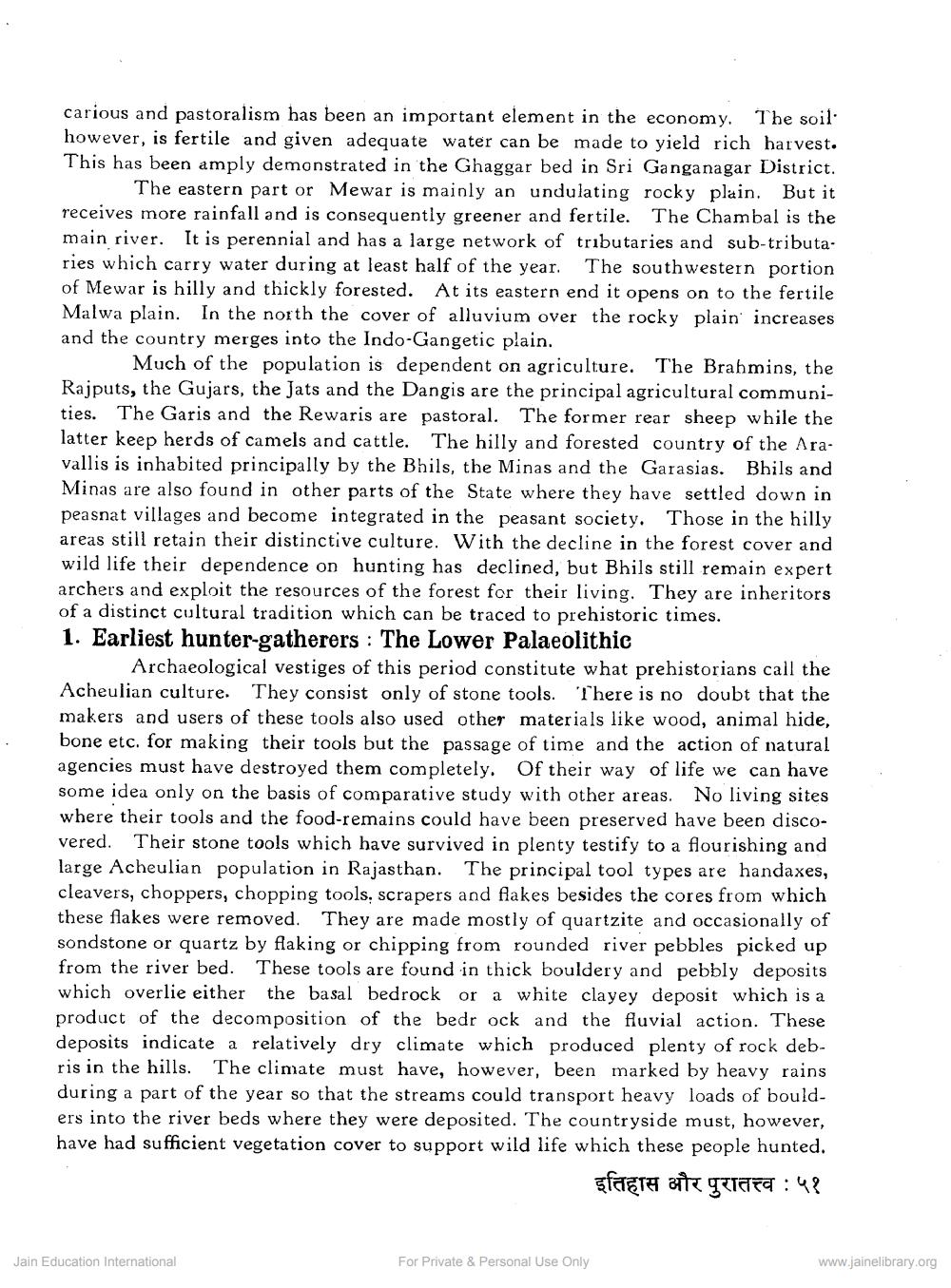Book Title: Prehistoric Background of Rajasthan Culture Author(s): V N Misra Publisher: Z_Agarchand_Nahta_Abhinandan_Granth_Part_2_012043.pdf View full book textPage 3
________________ carious and pastoralism has been an important element in the economy. The soil' however, is fertile and given adequate water can be made to yield rich harvest. This has been amply demonstrated in the Ghaggar bed in Sri Ganganagar District. The eastern part or Mewar is mainly an undulating rocky plain. But it receives more rainfall and is consequently greener and fertile. The Chambal is the main river. It is perennial and has a large network of tributaries and sub-tributa ries which carry water during at least half of the year. The southwestern portion of Mewar is hilly and thickly forested. At its eastern end it opens on to the fertile Malwa plain. In the north the cover of alluvium over the rocky plain increases and the country merges into the Indo-Gangetic plain. Much of the population is dependent on agriculture. The Brahmins, the Rajputs, the Gujars, the Jats and the Dangis are the principal agricultural communities. The Garis and the Rewaris are pastoral. The former rear sheep while the latter keep herds of camels and cattle. The hilly and forested country of the Aravallis is inhabited principally by the Bhils, the Minas and the Garasias. Bhils and Minas are also found in other parts of the State where they have settled down in peasnat villages and become integrated in the peasant society. Those in the hilly areas still retain their distinctive culture. With the decline in the forest cover and wild life their dependence on hunting has declined, but Bhils still remain expert archers and exploit the resources of the forest for their living. They are inheritors of a distinct cultural tradition which can be traced to prehistoric times. 1. Earliest hunter-gatherers: The Lower Palaeolithic Archaeological vestiges of this period constitute what prehistorians call the Acheulian culture. They consist only of stone tools. There is no doubt that the makers and users of these tools also used other materials like wood, animal hide, bone etc. for making their tools but the passage of time and the action of natural agencies must have destroyed them completely. Of their way of life we can have some idea only on the basis of comparative study with other areas. No living sites where their tools and the food-remains could have been preserved have been discovered. Their stone tools which have survived in plenty testify to a flourishing and large Acheulian population in Rajasthan. The principal tool types are handaxes, cleavers, choppers, chopping tools, scrapers and flakes besides the cores from which these flakes were removed. They are made mostly of quartzite and occasionally of sondstone or quartz by flaking or chipping from rounded river pebbles picked up from the river bed. These tools are found in thick bouldery and pebbly deposits which overlie either the basal bedrock or a white clayey deposit which is a product of the decomposition of the bedrock and the fluvial action. These deposits indicate a relatively dry climate which produced plenty of rock debris in the hills. The climate must have, however, been marked by heavy rains during a part of the year so that the streams could transport heavy loads of boulders into the river beds where they were deposited. The countryside must, however, have had sufficient vegetation cover to support wild life which these people hunted. इतिहास और पुरातत्त्व : ५१ Jain Education International For Private & Personal Use Only www.jainelibrary.orgPage Navigation
1 2 3 4 5 6 7 8 9 10 11 12 13 14 15 16 17 18 19
